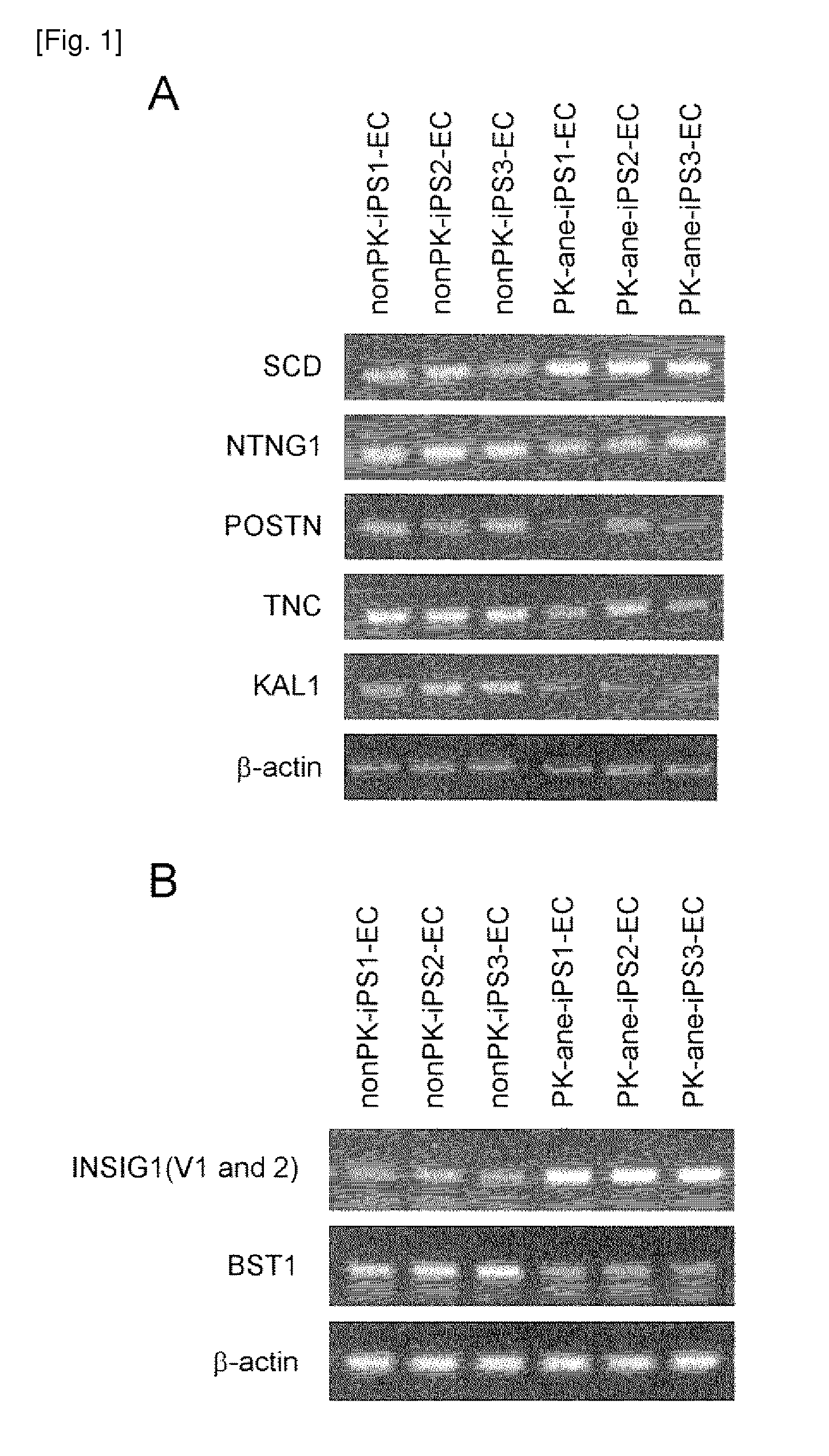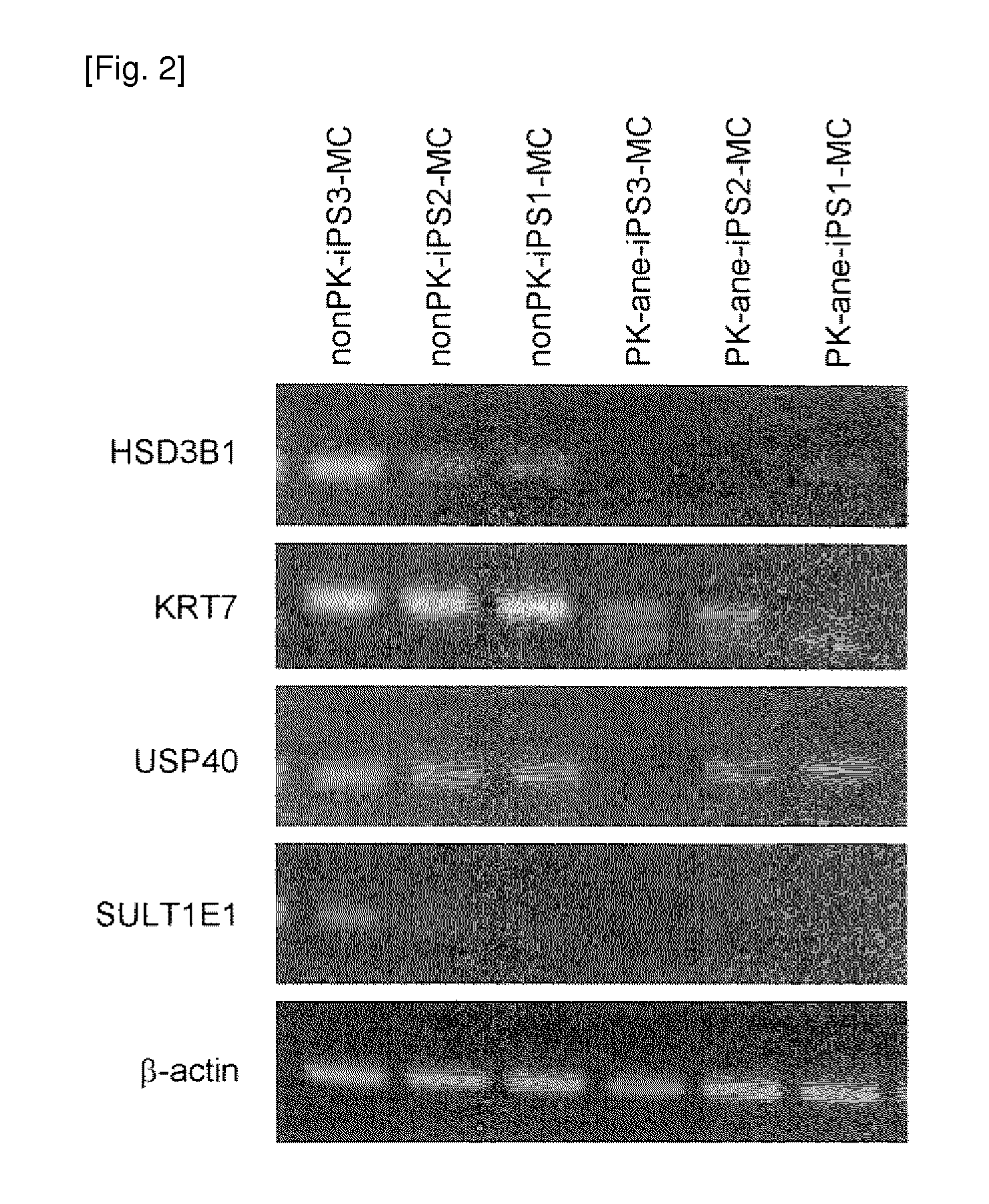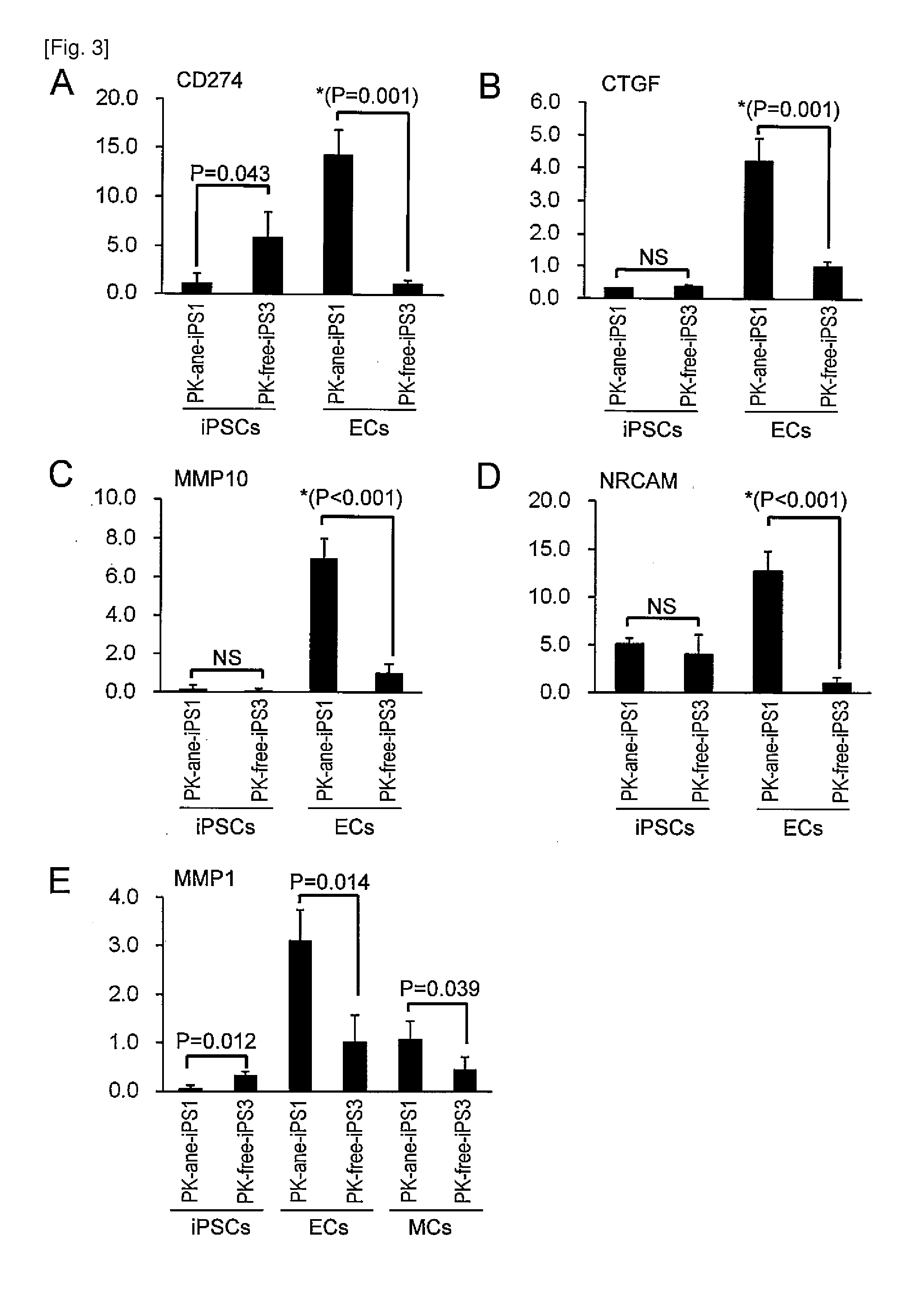Method of examining polycystic kidney disease and method of screening for therapeutic agent of the disease
a polycystic kidney and disease marker technology, applied in the field of examining polycystic kidney disease, can solve the problem of not having established an effective therapeutic method
- Summary
- Abstract
- Description
- Claims
- Application Information
AI Technical Summary
Benefits of technology
Problems solved by technology
Method used
Image
Examples
example 1
Establishment of iPS Cell Lines
[0280]Fibroblasts were established by culturing skin samples obtained via biopsies from four autosomal dominant polycystic kidney disease patients with onset of cerebral aneurysm as a complication and from three autosomal dominant polycystic kidney disease patients not developing cerebral aneurysm under agreement. The resultants were each designated PK-ane fibroblasts and PK-free fibroblasts, respectively, and then used in this Example. Meanwhile, a fibroblast cell line of three healthy persons not developing autosomal dominant polycystic kidney disease and cerebral aneurysm is designated nonPK fibroblast and then used in this Example.
[0281]Human cDNAs corresponding to Oct3 / 4, Sox2, Klf4, and c-Myc were introduced into the above fibroblasts using retrovirus according to the method described by Takahashi, K. et al. (Cell, 131(5), 861, 2007). Similarly, human cDNAs corresponding to Oct3 / 4, Sox2, and Klf4 were introduced into the above fibroblasts using a...
example 2
Induction of Differentiation into Vascular Endothelial Cells
[0282]Each iPS cell line colony prepared as described in Example 1 was separated into pieces with an appropriate size, sprayed over a type-I collagen coating dish (Becton Dickinson), followed by 1 day of culture in a medium for primate ES / iPS cells (ReproCELL) to adhere the cells to the dish surface. On day 2, a GSK-3 alpha / beta inhibitor (Sigma), N2 supplement, and B27 supplement (both, Invitrogen) were added and then cells were cultured for further 3 days. Then the medium was exchanged with a serum free medium for human hematopoietic stem cells (Invitrogen), and then 50 ng / ml VEGF (Peprotec Inc) was added. After further 5 days of culture, cells were dissociated, and then VEGFR2-positive, TRA1-negative, and VE-cadherin-positive cells were separated by FACS. Subsequently, the separated cells were sprayed over type-IV collagen coating dishes (Becton Dickinson), and then cultured in a growth medium for vascular endothelial ce...
example 3
Induction of Differentiation into Vascular Mural Cells
[0283]Each of the above prepared iPS cell line colonies was separated into pieces with an appropriate size, sprayed over a type-I collagen coating dish (Becton Dickinson), followed by 1 day of culture with a medium for primate ES / iPS cells (ReproCELL) to adhere the cells to the dish surface. On day 2, a GSK-3 alpha / beta inhibitor (Sigma), N2 supplement, and B27 supplement (both, Invitrogen) were added, and then cells were cultured for further 3 days. Then the medium was exchanged with a serum free medium for human hematopoietic stem cells (Invitrogen). After 5 days of culture, cells were dissociated, and then VEGFR2-positive, TRA1-negative, and VE-cadherin-negative cells were separated by FACS. Subsequently, the thus separated cells were sprayed over a type-IV collagen coating dish (Becton Dickinson) and further cultured in MEM containing 2-% FCS and 20 ng / ml PDGF-BB (Peprotech Inc). Thus, cells were induced to differentiate into...
PUM
| Property | Measurement | Unit |
|---|---|---|
| time | aaaaa | aaaaa |
| time | aaaaa | aaaaa |
| time | aaaaa | aaaaa |
Abstract
Description
Claims
Application Information
 Login to View More
Login to View More - R&D
- Intellectual Property
- Life Sciences
- Materials
- Tech Scout
- Unparalleled Data Quality
- Higher Quality Content
- 60% Fewer Hallucinations
Browse by: Latest US Patents, China's latest patents, Technical Efficacy Thesaurus, Application Domain, Technology Topic, Popular Technical Reports.
© 2025 PatSnap. All rights reserved.Legal|Privacy policy|Modern Slavery Act Transparency Statement|Sitemap|About US| Contact US: help@patsnap.com



